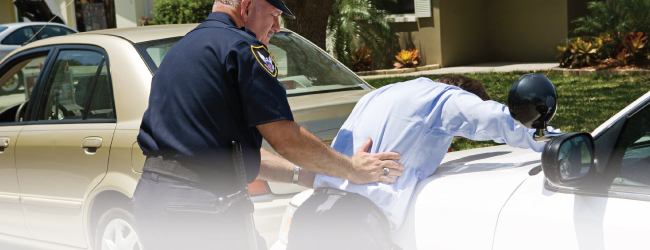
Smartphones and the Police: Riley v. California
In 2014, the United States Supreme Court addressed an evolving Fourth Amendment issue in Riley v. California, 134 S.Ct. 2473 (2014). Given the proliferation of smartphones, when coupled with their rapidly expanding capability, it was only a matter of time before the Supreme Court would be called upon to address the application of the Fourth Amendment to smartphones. Riley was that case.
The Law Before Riley
People v. Diaz, (2011) 51 Cal.4th 84, was the controlling California authority on the search and seizure of an arrestee’s cellphone. The police conducted a warrantless search of the text message folder on the defendant’s cellphone approximately 90 minutes after his arrest on a narcotics charge. An incriminating text message was found and the defendant’s motion to suppress was denied. The Court of Appeal affirmed.
Despite the time gap between the arrest and search, the California Supreme Court held that the warrantless search of the defendant’s cellphone was valid because it was “immediately associated with defendant’s person” and the search was valid irrespective whether an exigency existed.1
The Riley Decision
In Riley v. California, the United States Supreme Court addressed the issue whether the police can conduct a warrantless search of a “smartphone” seized incident to an arrest.
Riley involved two consolidated cases regarding whether the police properly conducted a warrantless search of a cellphone incident to an arrest. Following a traffic stop, Riley’s car was impounded and an inventory search disclosed concealed and loaded firearms. The police seized his smartphone, which contained various gang-related information and photographs of Riley standing in front of a car the police suspected had been involved in a prior shooting.
Riley was charged in connection with the shooting, which carried a gang enhancement. The Court of Appeal affirmed the denial of Riley’s motion to suppress evidence from the smartphone. The California Supreme Court denied the petition for review.
In the second case, petitioner Wurie was arrested on a narcotics charge. One of Wurie’s two cellphones was a “flip phone.” At the police station, Wurie received several phone calls which the police traced to an apartment building bearing Wurie’s name on the mailbox.
After observing a woman through a window resembling the photograph on the flip phone, the police obtained a search warrant for the apartment, where they found various narcotics, drug paraphernalia, firearms, ammunition and cash. He was convicted of various narcotics and weapon charges. The District Court denied Wurie’s motion to suppress. A divided panel of the 1st Circuit reversed the denial of the motion to suppress. The Supreme Court granted certiorari in both cases.
The foundation of Riley was found in three Fourth Amendment cases that laid the groundwork for the body of search and seizure law, including:
- Chimel v. California, 395 U.S. 752 (1969): Reasonable for the police to search and seize any evidence found on or near the arrestee, but a search of the entire house where the arrest was made was unreasonable.
- United States v. Robinson, 414 U.S. 218 (1973): A full search of the person including a pack of cigarettes containing heroin was not only an exception to the warrant requirement of the Fourth Amendment, but was also reasonable notwithstanding that the officer did not suspect that the defendant was armed.
- Arizona v. Gant, 556 U.S. 332 (2009): A search of the arrestee’s car and jacket was unreasonable when the arrestee was handcuffed and placed in the police car.
The cynosure of these three cases was that, for purposes of officer safety, the arresting officer was entitled to conduct a search for weapons or evidence incident to the arrest.
Against this backdrop, the Supreme Court turned its attention to the modern issue of data secured on a smartphone. In this regard, the Supreme Court noted that the term cellphone is “misleading shorthand; many of these devices are in fact minicomputers,” which also can be used as a telephone.2 In the digital age, the storage capacity of cellphones has several privacy consequences. There is an element of “pervasiveness that characterizes cellphones but not physical records” including storing photographs, contacts and medical and financial information.3
Further, the apps can reveal a great deal about a person’s life, ranging from political and religious associations to addictions, medical and dating histories.4 Smartphones can also reveal Internet search histories and can reconstruct a person’s specific movements through GPS monitoring.5
The Supreme Court decided:
“Our holding, of course, is not that the information on a cellphone is immune from search; it is instead that a warrant is generally required before such a search, even when a cellphone is seized incident to arrest.”6
Despite this holding, the Supreme Court still noted that exigent circumstances could compel a warrantless search, such as to prevent the imminent destruction of evidence.7
Thus, Riley held that the arresting officer can seize, but cannot search the smartphone absent a warrant unless there are exigent circumstances.
The contours of the warrantless search and seizure of a smartphone is resolved with the Riley decision. That being said, does Riley extend to other technological devices such as a GPS? Appellate courts will undoubtedly wrestle with that issue in the future. This issue was raised—but not resolved—in American News & Information v. Gore,(2014) U.S. Dist. Lexis 132591. A reporter’s media credentials were revoked but he continued to appear at crime scenes. He was arrested a few times for obstructing a police officer and twice the police seized his video camera.
In connection with a motion to dismiss, the court held “the video cameras at issue here appear to fall somewhere between the physical search of a cigarette package found in a pocket during a search incident to arrest allowed under United States v. Robinson and the data search of a cellphone under Riley that generally requires a warrant.”8 The court granted qualified immunity to the officers.